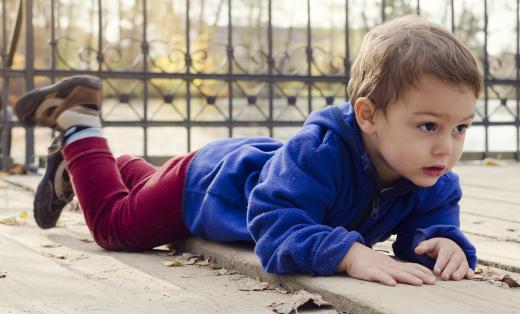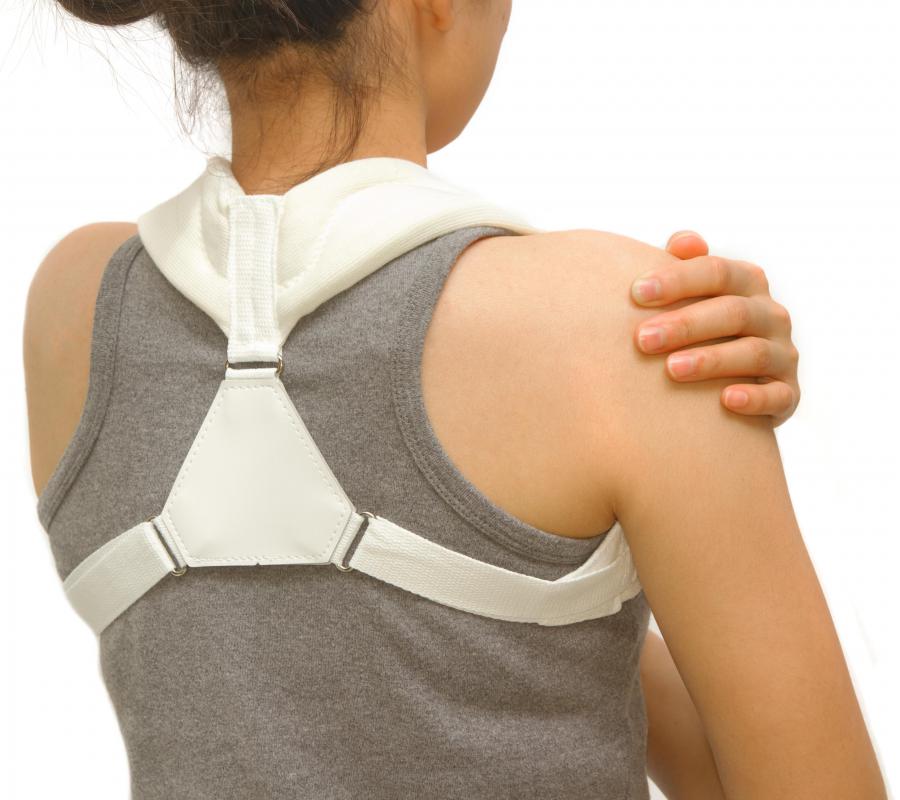At TheHealthBoard, we're committed to delivering accurate, trustworthy information. Our expert-authored content is rigorously fact-checked and sourced from credible authorities. Discover how we uphold the highest standards in providing you with reliable knowledge.
What is a Clavicle Brace?
A clavicle brace provides support and stability for the collarbone and back after a fracture. Braces are used as a treatment method to rest and stabilize the bone while allowing it to heal. The clavicle bone is the long bone that connects the breastplate and the shoulder on each side of the body. Surgery is rarely needed for a fractured clavicle, and there are many types of braces and slings available to aid in the healing process.
There are two types of braces used to immobilize the arm to allow for healing: a figure-of-8 clavicle brace and a sling. A sling holds the arm in a bent position at the person’s side. People with hairline fractures or simple fractures should wear a sling. Usually, a physician or physical therapist will have the person begin motion exercises after a few weeks to keep the arm from becoming stiff.

The figure-of-8 clavicle brace holds the clavicle in the correct alignment by forcing the shoulders into a retracted position, and finding the right size is very important for proper recovery. The straps of a figure-of-8 brace wrap around both shoulders and are connected at the middle of the person’s back. The straps should be tightened periodically to reposition the back. People with back issues as a result of bad posture also might wear this type of brace.

A consultation with a doctor is necessary to find the proper method of treatment for a clavicle fracture. If the fracture is not treated, the fractured ends of the bone may not heal together properly, causing a non-union and a lump at the fracture site. The bone could also heal shorter than the person’s non-injured clavicle, which can cause pain and range-of-motion issues later in life. A clavicle brace is usually worn for six to 12 weeks for adults and two to four weeks for children.

Clavicle injuries are fairly common, and they usually occur when people fall down with their arm outstretched, or they fall directly on a shoulder. Young children are especially susceptible to fractures because the clavicle bone does not fully develop until a person is in their late teens or early twenties. A broken clavicle is easily felt through the skin and usually is accompanied by swelling or bruising around the area of the fracture. This type of injury can make it extremely difficult for a person to rotate or lift his or her arm. Typically, the only treatment for this type of fracture is a clavicle brace, sometimes followed by physical therapy.
AS FEATURED ON:
AS FEATURED ON:















Discuss this Article
Post your comments